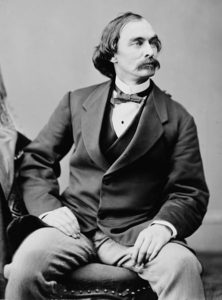 Abraham Lincoln had a knack for meeting Arctic explorers. On March 1, 1862, Lincoln wrote to Secretary of War Edwin Stanton:
Abraham Lincoln had a knack for meeting Arctic explorers. On March 1, 1862, Lincoln wrote to Secretary of War Edwin Stanton:
Dr. Isaac I. Hayes, of Dr. Kane’s Arctic expedition, and more recently of an Arctic expedition headed by himself, is an applicant for Brigade Surgeon; and I would like for him to be appointed at once, if consistent with the rules. Yours truly A. LINCOLN
Hayes was a bit of an adventurer. Born in eastern Pennsylvania, he was raised on his family’s farm and attended a school run by Quakers, where while still a teenager he became an assistant teacher of civil engineering and mathematics. By the time he was 20 years old he was in medical school, then shortly thereafter signed on ship’s surgeon for the Second Grinnell Expedition led by Elisha Kane. The Kane Expedition left New York harbor in 1853 headed for the Arctic, in particular to search of the lost Franklin expedition. Over the course of his ensuing explorations, Hayes mapped the previously unexplored Ellesmere Island. The expedition caused near starvation (his group subsisted on lichens) and the amputation of three frostbitten toes.
Lincoln may have been inspired by Hayes’s lecture tour, which included the Smithsonian Institution. He became one of the most prolific lecturers and writers on the Arctic of his time. After his distinguished Civil War service as head of Satterlee General Hospital in Philadelphia, Hayes wrote a book on his Arctic experiences: The Open Polar Sea: A Narrative of a Voyage of Discovery towards the North Pole, in the Schooner United States.
Hayes wasn’t the only ice-bound explorer Lincoln associated with. Charles Wilkes, who would during the war instigate the “Trent Affair” that almost started a second war with England, had previously led the first United States Exploring Expedition (1838-1841) in the South Seas, including Antarctica. Lincoln would meet in the White House with Herman Melville, who some historians suggest may have based his Captain Ahab in Moby Dick on Charles Wilkes. Lincoln also met in the White House with Louis Agassiz, a Swiss-American scientist who is well known for his study of glaciers. [There is much more about Agassiz and Lincoln in The Fire of Genius]
Lincoln had given his lecture on Discoveries and Inventions prior to becoming president and told Louis Agassiz in the White House that he had plans to expand upon it after his second term. That opportunity never came, but Lincoln’s interest in science and technology did become important both in winning the Civil War and modernizing America.
I take a deeper dive into all of these facets in Lincoln: The Fire of Genius, now available for pre-order.
Pre-order Lincoln: The Fire of Genius now on Amazon and Barnes and Noble (click on the respective links to pre-order). The price is likely to drop before the final shipment, and any pre-orders will automatically get charged the lower price at fulfillment. Pre-ordering now helps the publisher get a sense of the interest, which could mean a bigger print run. So please go ahead and pre-order without worries. While you’re there, check out my other books.
The book is also listed on Goodreads, the database where I keep track of my reading. Click on the “Want to Read” button to put it on your reading list. That will also ensure you get informed of the release date AND will let you try for one of ten free hardcover copies of the book that I’ll be giving away this summer. I’ll also be giving away as many as a hundred e-books. [The book will also be put out on audio]
You also follow my author page on Facebook.
I’ll have much more about the book over the next few months, so join my mailing list here to keep informed.
David J. Kent is President of the Lincoln Group of DC and the author of Lincoln: The Man Who Saved America. His previous books include Tesla: The Wizard of Electricity and Edison: The Inventor of the Modern World and two specialty e-books: Nikola Tesla: Renewable Energy Ahead of Its Time and Abraham Lincoln and Nikola Tesla: Connected by Fate.
Check out my Goodreads author page. While you’re at it, “Like” my Facebook author page for more updates!
[Photo: Wiki Commons]



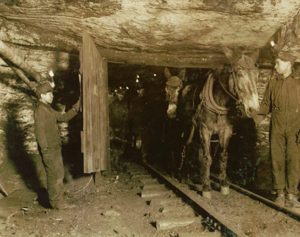 On February 15, 1853, Abraham Lincoln wrote to
On February 15, 1853, Abraham Lincoln wrote to  Abraham Lincoln rejects gift of elephants from Siam by pointing out the advantages of steam power. Lincoln would promote many scientific and technological improvements in his lifetime and his presidency.
Abraham Lincoln rejects gift of elephants from Siam by pointing out the advantages of steam power. Lincoln would promote many scientific and technological improvements in his lifetime and his presidency.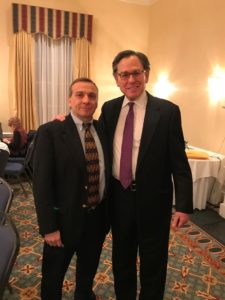 As mentioned last time, Lincoln: The Fire of Genius is now open for pre-order on
As mentioned last time, Lincoln: The Fire of Genius is now open for pre-order on 
 The year in a writer’s life actually went much more to plan than
The year in a writer’s life actually went much more to plan than 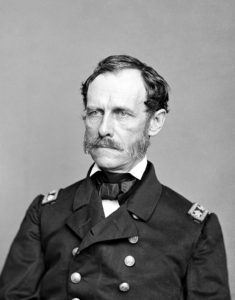 Lincoln liked John A. Dahlgren, his weapons guy, of sorts. On December 8, 1862, Lincoln sent a telegram to the Washington Navy Yard with the succinct request: “Will Capt. Dahlgren please call and see me at once?”
Lincoln liked John A. Dahlgren, his weapons guy, of sorts. On December 8, 1862, Lincoln sent a telegram to the Washington Navy Yard with the succinct request: “Will Capt. Dahlgren please call and see me at once?”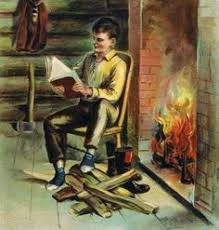 “Upon the subject of education,” Abraham Lincoln wrote in his Communication to the People of Sangamo County in 1832, “I can only say that I view it as the most important subject which we as a people can be engaged in.”
“Upon the subject of education,” Abraham Lincoln wrote in his Communication to the People of Sangamo County in 1832, “I can only say that I view it as the most important subject which we as a people can be engaged in.”
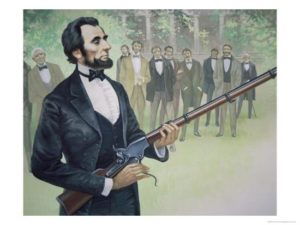 Lincoln took a scientific approach to military strategy. The Anaconda plan’s focus was on securing the coastlines and the Mississippi River. Recognizing New Orleans as the hub of the cotton trade and commerce, Lincoln saw it as the first port to be targeted for blockade. He also hoped to block southern ship traffic from Charleston, South Carolina to cut off Confederate attempts to woo Great Britain and France to their side. Helping him make this happen was Alexander Dallas Bache and the Coast Survey. The Coast Survey had been authorized by Thomas Jefferson, and Bache, who was Benjamin Franklin’s great-grandson, was quick to send nautical charts of the Chesapeake Bay to Lincoln. He also forwarded two terrestrial maps produced by the Survey that had far-reaching influence on Lincoln’s decisions on emancipation and military strategy.
Lincoln took a scientific approach to military strategy. The Anaconda plan’s focus was on securing the coastlines and the Mississippi River. Recognizing New Orleans as the hub of the cotton trade and commerce, Lincoln saw it as the first port to be targeted for blockade. He also hoped to block southern ship traffic from Charleston, South Carolina to cut off Confederate attempts to woo Great Britain and France to their side. Helping him make this happen was Alexander Dallas Bache and the Coast Survey. The Coast Survey had been authorized by Thomas Jefferson, and Bache, who was Benjamin Franklin’s great-grandson, was quick to send nautical charts of the Chesapeake Bay to Lincoln. He also forwarded two terrestrial maps produced by the Survey that had far-reaching influence on Lincoln’s decisions on emancipation and military strategy.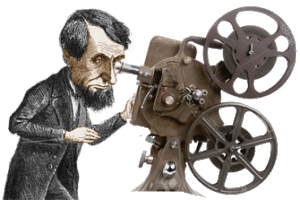 Technically, Lincoln didn’t attend the exhibition, but on this date, October 14, 1861, a committee of commissioners for the industrial exhibition in England visits President Lincoln in the White House and asks use of a government vessel to transport American contributions to the fair. Lincoln had supported United States participation.
Technically, Lincoln didn’t attend the exhibition, but on this date, October 14, 1861, a committee of commissioners for the industrial exhibition in England visits President Lincoln in the White House and asks use of a government vessel to transport American contributions to the fair. Lincoln had supported United States participation.






